A HEART TRANSPLANTATION NARRATIVE:
THE EARLIEST YEARS
By Eugene Dong, M.D., J.D. and as told to him by Norman E. Shumway, M.D., Ph.D. and
Richard R. Lower, M.D.
Dr. Dong's Address:
Dept. of Cardiothoracic Surgery
Stanford University School of Medicine
300 Pasteur Drive
Stanford, CA 94305
© 1995 Eugene Dong, MD, JD; last revised November 3, 1995;
Revised and updated with permission from
History of Transplantation:
Thirty-Five Recollections,
Paul I. Terasaki, Editor
© 1991 The Regents of the University of California
Part One: The Paths Less Traveled
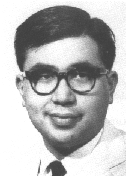
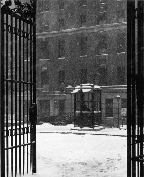 On a bright winter day in 1959, Eugene Dong, M.D. traveled to Stanford University at Palo
Alto, looking for a training position in surgery. He was in the midst of a medical internship in the
Columbia University division at Bellevue Hospital in New York City. The chairman of the
Columbia Medical Division was Dickinson W. Richards, MD, who with Andre Cournand, had
been awarded the 1958 Nobel Prize in Medicine and Physiology for their work leading to an fuller
understanding the physiology of the human heart using cardiac catheterization techniques. Since
Dong was interested in the newly developing area of heart surgery, he did not want to pass up a
chance to learn from Dr. Richards, figuring that there was plenty of time later to pick up his
surgical experience. Upon application to both his alma mater, the University of California at San
Francisco, and the Columbia University surgical service at Bellevue, he received the news that
they wanted him to take an additional year of training at the intern level in surgery before
considering him for a surgical residency. So Dong was trying his luck at a new school and
hospital.
On a bright winter day in 1959, Eugene Dong, M.D. traveled to Stanford University at Palo
Alto, looking for a training position in surgery. He was in the midst of a medical internship in the
Columbia University division at Bellevue Hospital in New York City. The chairman of the
Columbia Medical Division was Dickinson W. Richards, MD, who with Andre Cournand, had
been awarded the 1958 Nobel Prize in Medicine and Physiology for their work leading to an fuller
understanding the physiology of the human heart using cardiac catheterization techniques. Since
Dong was interested in the newly developing area of heart surgery, he did not want to pass up a
chance to learn from Dr. Richards, figuring that there was plenty of time later to pick up his
surgical experience. Upon application to both his alma mater, the University of California at San
Francisco, and the Columbia University surgical service at Bellevue, he received the news that
they wanted him to take an additional year of training at the intern level in surgery before
considering him for a surgical residency. So Dong was trying his luck at a new school and
hospital.
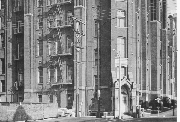 Stanford University had decided to move its medical school, Stanford-Lane, San Francisco
to the site of its main campus in Palo Alto, California. Stanford - Lane had been a respected,
clinically oriented medical school. The move signaled primarily closer ties to the growing research
faculty in the other disciplines. By 1959, few established surgeons had transferred to the suburban
site. The dean of the new Stanford school, Robert Alway, M.D., had told Dong and other
inductees at the 1959 Alpha Omega Alpha honor medical society induction dinner to consider
Stanford's new direction in medical research at a new facility in Palo Alto.
Stanford University had decided to move its medical school, Stanford-Lane, San Francisco
to the site of its main campus in Palo Alto, California. Stanford - Lane had been a respected,
clinically oriented medical school. The move signaled primarily closer ties to the growing research
faculty in the other disciplines. By 1959, few established surgeons had transferred to the suburban
site. The dean of the new Stanford school, Robert Alway, M.D., had told Dong and other
inductees at the 1959 Alpha Omega Alpha honor medical society induction dinner to consider
Stanford's new direction in medical research at a new facility in Palo Alto.
The incoming chairman of surgery was to be J. Garrott Allen, M.D., an academic from the
University of Chicago whose credentials included editing a textbook of surgery and studies on
plasma and hepatitis. Allen had not yet arrived on campus. Of particular relevance to the
advancement of cardiac surgery science was the fact that Frank Gerbode, M.D., a San Francisco
pioneer in heart surgery, elected to stay in San Francisco.
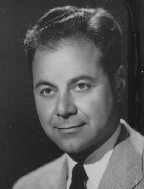 On the particular day of Dong's visit, Roy B. Cohn, M.D. was acting department
chairman. Cohn was one of the few established Stanford surgeons who made the move from San
Francisco to Palo Alto. Cohn was later to perform the first kidney transplants on the West Coast
between identical twins and become the mentor for Samuel Kountz, M.D. Initially Cohn indicated
that there were no positions available for Dong. After a bit of conversation, Cohn learned that
Cohn and Dong's uncle were poker playing students together at the old Stanford Medical School.
Of such trivialities arose Cohn's suggestion to Dong that maybe a young cardiac surgeon named
Norman Shumway might be interested in having a research fellow for a while.
On the particular day of Dong's visit, Roy B. Cohn, M.D. was acting department
chairman. Cohn was one of the few established Stanford surgeons who made the move from San
Francisco to Palo Alto. Cohn was later to perform the first kidney transplants on the West Coast
between identical twins and become the mentor for Samuel Kountz, M.D. Initially Cohn indicated
that there were no positions available for Dong. After a bit of conversation, Cohn learned that
Cohn and Dong's uncle were poker playing students together at the old Stanford Medical School.
Of such trivialities arose Cohn's suggestion to Dong that maybe a young cardiac surgeon named
Norman Shumway might be interested in having a research fellow for a while.
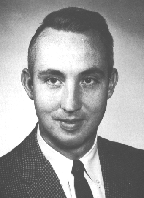 Norman Shumway, M.D., Ph.D. was not a man to stand on the formalities either in
training or of position. Shumway appeared in an office which was no larger than five feet by 10
with a single window in the far side opening on to the center well of the surgical wing of the
medical school. The office was shared with another, and the two desks side by side were standard
chrome trimmed tan metal desks.
Norman Shumway, M.D., Ph.D. was not a man to stand on the formalities either in
training or of position. Shumway appeared in an office which was no larger than five feet by 10
with a single window in the far side opening on to the center well of the surgical wing of the
medical school. The office was shared with another, and the two desks side by side were standard
chrome trimmed tan metal desks.
After the briefest of interviews with Dong, Shumway indicated he would support Dong's
application for a NIH postdoctoral fellowship. In the meantime, Shumway asked Dong if he
would like to see an animal which had just survived a heart transplant operation.
The medical school building was attached to the Palo Alto-Stanford University Hospital.
This hospital was as much an experiment in marrying a university medical staff with a community
physician staff as was the medical school's marriage with the scientific university community.
Although the hospital was subsequently purchased by Stanford and became the Stanford
University Hospital, its schizophrenic birth has lingering effects.
The offices in the School of Medicine for the Department of Surgery were arranged such
that they were directly across a six foot hallway from the laboratories. In Shumway's case, his
laboratory was just a few doors down the hall. The laboratory was 30 by 30 feet in size. There
were freshly constructed operating tables, surgical lights, an electrocardiographic machine, and a
bulky heart lung machine using the latest technology: a Kay-Cross rotating disk oxygenator. And
there was indeed a frisky dog with a recent surgical scar. Also present was the surgical resident,
Richard Lower, M.D., who had operated on this the first animal to receive a heart from another
animal in the "orthotopic" position and live. It is fair to say that among the three present that day,
Shumway, Lower, and Dong, none realized the long-lasting relationship they all would have with
the field of heart transplantation and with each other.
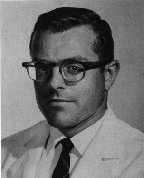 Richard R. Lower, M.D. arrived at Stanford because Lower, like Dong, had strayed off
the beaten path for surgical training. Lower was raised in Michigan and went to medical school at
Cornell. An interest in the outdoors caused him to choose the University of Washington in the
northwest for his surgical residency in 1956. However, during his internship, Lower broached the
subject of a shorter training period with the chairman, Dwight Harkins, M.D., because of Lower's
initial interest in becoming a general practitioner. It was not to be. Harkins' inflexibility lead
Lower to Stanford Lane Hospital in San Francisco. The surgeon in charge of residency training
there, Victor Richards, M.D., indicated that he could care less how long it took Lower to achieve
the training he wanted.
Richard R. Lower, M.D. arrived at Stanford because Lower, like Dong, had strayed off
the beaten path for surgical training. Lower was raised in Michigan and went to medical school at
Cornell. An interest in the outdoors caused him to choose the University of Washington in the
northwest for his surgical residency in 1956. However, during his internship, Lower broached the
subject of a shorter training period with the chairman, Dwight Harkins, M.D., because of Lower's
initial interest in becoming a general practitioner. It was not to be. Harkins' inflexibility lead
Lower to Stanford Lane Hospital in San Francisco. The surgeon in charge of residency training
there, Victor Richards, M.D., indicated that he could care less how long it took Lower to achieve
the training he wanted.
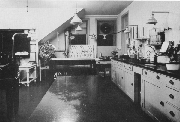 At that time, Stanford required their surgical residents to spend some time in research.
The physical facilities of the Stanford surgical laboratories were relics of a past era even for the
1950s. A single large laboratory was used both for research and for a dog surgery course for
fourth-year medical students. The wash basins were made of cement. The plumbing was exposed. There were smaller rooms where experiments were carried out in which, on rainy days,
the silence of the dark and gloomy interiors was interrupted by the sound of leaking rainwater
being caught in buckets.
At that time, Stanford required their surgical residents to spend some time in research.
The physical facilities of the Stanford surgical laboratories were relics of a past era even for the
1950s. A single large laboratory was used both for research and for a dog surgery course for
fourth-year medical students. The wash basins were made of cement. The plumbing was exposed. There were smaller rooms where experiments were carried out in which, on rainy days,
the silence of the dark and gloomy interiors was interrupted by the sound of leaking rainwater
being caught in buckets.
Lower circulated among the several surgeons assisting all of them with their research
projects and there met Shumway, who turned out to be a kindred spirit.
Norman E. Shumway was born in Kalamazoo, Michigan in 1923 and raised in Jackson,
Michigan. His career as an attorney was cut short after just one year of prelaw studies at the
University of Michigan by army service in World War 11. Recognizing that the infantry was not
particularly attractive with a shooting war going on, he took the medical training opportunity
presented by the Army with little vacillation. His premedical schooling was in Texas and his
medical school training was at Vanderbilt University in Tennessee from which he graduated in
1949. He began his residency at the University of Minnesota graduate program in surgery.
However, after two years, Shumway was required to return to the service during the
Korean conflict due to the schooling he had accepted from the government. After another couple
of years, he was back at the University of Minnesota.
Owen Wangensteen, M.D. was Minnesota's famed chairman of surgery. Although
Wangensteen was a general surgeon, Minnesota had developed into the central hub for fledgling
field of open-heart surgery. C. Walton Lilleihei, M.D. lead the clinical effort using
cross-circulation and mechanical heart-lung support and F. John Lewis, M.D. lead the effort in
the use of total-body hypothermia.
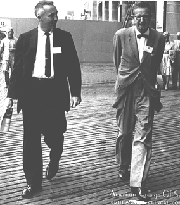
Wangensteen's surgical trainees formally matriculated in a doctoral program. Shumway's mentor
was Lewis, and therefore Shumway's doctoral research was on the effects of hypothermia on the
heart. Specifically, Shumway studied the ventricular fibrillation threshold showing that as the
temperature fell, less current was needed to cause the heart to fibrillate.
However, after five years of training, Shumway felt the urge to move on without taking
the rotation through Dr. Wangensteen's service, which in practical effect meant not taking the
traditional chief residency.
Eschewing the academic life temporarily, Shumway initially began a private clinical
practice in partnership with an older surgeon in Santa Barbara, California in 1957. By all
accounts, it was not a match made in heaven, and Shumway moved again to Northern California.
Shumway's academic choices were between the University of California and
Stanford-Lane in San Francisco. But Shumway recognized that UCSF was not available to him
when during his interview with the department chief, Dr. Leon Goldman, Dr. Goldman fell asleep.
Shumway quietly left to try his luck with Stanford.
The prospects for a young cardiac surgeon breaking in at Stanford-Lane were only
minimally brighter than at UCSF, Shumway was offered running the kidney dialysis machine and
all the private practice he could hustle. In real terms, the latter meant taking calls for surgeons on
vacation. There was little doubt that Dr. Frank Gerbode, Stanford's established heart surgeon,
was not offering Shumway any openings at Stanford in heart surgery.
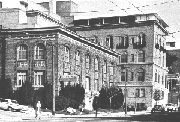 The opportunity for Shumway arose from an unlikely source - Dr. Ann Purdy.
Purdy was one of Stanford's pediatric cardiologists and the wife of Dr. Emile Holman,
the long-time chief of surgery at Stanford. Purdy was not satisfied in her professional
relationships with Gerbode and Dr. Saul Robinson, another pediatric cardiologist, and
moved her base of operations to the then Children's Hospital in San Francisco.
The opportunity for Shumway arose from an unlikely source - Dr. Ann Purdy.
Purdy was one of Stanford's pediatric cardiologists and the wife of Dr. Emile Holman,
the long-time chief of surgery at Stanford. Purdy was not satisfied in her professional
relationships with Gerbode and Dr. Saul Robinson, another pediatric cardiologist, and
moved her base of operations to the then Children's Hospital in San Francisco.
Roy Cohn, who had been working with Purdy on non-cardiac congenital defects in children,
suggested that he might be the appropriate surgeon to team with Shumway to perform heart
surgery at Children's Hospital. To that end, Cohn provided funds to purchase the equipment
necessary, got the referrals from Purdy, and prepared a team to perform the surgery. When the
program actually began, the line-up shifted when Cohn, perhaps busy with his clinical work,
absented himself from the laboratory preparation stage. Shumway who, nominally, was to
operate the heart-lung machine started running the operative team.
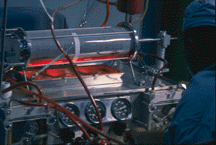 Shumway teamed with Raymond Stofer, D.V.M. to work out the heart-lung machine and
perfusion issues. Stofer, a master sergeant type in personality and appearance, was a veterinarian
recruited by Stanford to oversee the operations of the surgical laboratory. Under his bluff
exterior, Stofer was a master metal worker and in his private time a fine photographer. Although
he had his own research projects, they were set aside when called upon to develop and operate
the perfusion system. Under Shumway's direction, Stofer worked out an extraordinarily
unadorned and spartan system with a minimum of gauges and monitors to watch, clean, or repair.
The perfusion system was in marked contrast to the complex oxygenating system Gerbode's
perfusionists and anesthesiologists had constructed and had become use to. This simplicity was to
be a trademark of Shumway's conceptual approach to surgical advances.
Shumway teamed with Raymond Stofer, D.V.M. to work out the heart-lung machine and
perfusion issues. Stofer, a master sergeant type in personality and appearance, was a veterinarian
recruited by Stanford to oversee the operations of the surgical laboratory. Under his bluff
exterior, Stofer was a master metal worker and in his private time a fine photographer. Although
he had his own research projects, they were set aside when called upon to develop and operate
the perfusion system. Under Shumway's direction, Stofer worked out an extraordinarily
unadorned and spartan system with a minimum of gauges and monitors to watch, clean, or repair.
The perfusion system was in marked contrast to the complex oxygenating system Gerbode's
perfusionists and anesthesiologists had constructed and had become use to. This simplicity was to
be a trademark of Shumway's conceptual approach to surgical advances.
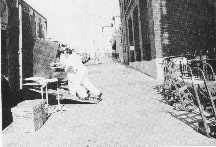 Lower was by then collaborating with Shumway, and when the time came for the first
clinical cases, the group packed the equipment in a moving van and moved lock, stock, and barrel
from the Stanford-Lane laboratories to the Children's Hospital operating room. Shumway's and
Cohn's first case was an atrial septal defect in a young woman which was corrected under
total-body hypothermia. After the surgery, the operating equipment was all packed up and moved
back to Stanford-Lane. There were fourteen more cases done at Children's Hospital before the
school and Shumway moved to Palo Alto.
Lower was by then collaborating with Shumway, and when the time came for the first
clinical cases, the group packed the equipment in a moving van and moved lock, stock, and barrel
from the Stanford-Lane laboratories to the Children's Hospital operating room. Shumway's and
Cohn's first case was an atrial septal defect in a young woman which was corrected under
total-body hypothermia. After the surgery, the operating equipment was all packed up and moved
back to Stanford-Lane. There were fourteen more cases done at Children's Hospital before the
school and Shumway moved to Palo Alto.
Part Two: Keeping It Cool
The key cardiac surgical question of the day was how to protect the heart during heart
surgery. While some procedures could be carried out with the heart perfused and beating, greater
accuracy in intraoperative diagnosis and repair could be gained with the heart "arrested" and the
field relatively dry. Other procedures necessitated opening the aorta and thus the coronary
arteries would not be perfused naturally. This was the most demanding situation. Two methods
were then current: 1) use catheters and perfuse the coronary arteries and 2) use potassium arrest.
Neither technique was particularly satisfactory. The first method cluttered the field with catheters
and was fraught with mechanical perfusion problems. The second method gained no time for the
surgeon and eventually was shown to be contraindicated.
Shumway and Lower tackled this problem in the laboratory, exploring an idea Shumway
derived from his hypothermia experience. It was called "topical hypothermia." The experimental
animal's body temperature was reduced using the perfusion equipment to about 32 degrees
centigrade, while catheters were sutured around the edge of the opened pericardium which in turn
had been sutured to the edges of the sternal wound to form a cradle. Ice cold saline then
continuously flowed into the pericardial cradle, circulated around, and was then continuously
sucked out. The technique limited further cooling only to the heart. The aorta was then
cross-clamped so that no blood was flowing through the coronary arteries. After a period of time,
the aorta was undamped, blood flow restored, and the heart defibrillated with an electric shock.
After a period of support the animal could maintain its circulation on its own and the heart-lung
machine was discontinued.
Successful experiment after experiment were accomplished. The technique was published
in "Selective Hypothermia of the Heart in Anoxic Cardiac Arrest," Surgery, Gynecology,
and Obstetrics 1959; 109:750 click here for Acrobat(tm) version.
Part Three: Switching Hearts
As the cardiac arrest time got longer and longer, Lower and Shumway started discussing
what they could do to pass the time of the cardiac arrest. All sorts of fantasies were indulged in
while waiting. They considered bench heart surgery where the cooled heart was taken out and
operated upon on a figurative back bench, replacing parts and suturing defects under ideal
operating conditions.
To this end, Lower began experimenting with autotransplantation, wherein the heart was
excised and sutured back in. Lower used the same technique in excising the heart for the
operation as he had for excising the heart during the postmortem examinations. He cut through
the base of the atria and then the pulmonary artery and aorta separately. The heart was excised
and placed in an iced saline bath and then sutured in again. However, Lower had no successful
autotransplant operation despite many attempts because of the fragile nature of the experimental
animal's aorta. There was insufficient tissue to manipulate the heart autotransplant in the canine
model.
Lower was then moved to attempt heart transplantation. He postulated that the hearts of
both the donor and the recipient could be excised such that there would be surgically adequate
margins to suture the heart back together with less technical wizardry demanded. That proved to
be true. So it was that Shumway's hypothermia experiments led to Lower's thoughts about how
to pass the time during the experiment to the first successful heart transplant operation in
December 1959.
Allen, the department chairman, was concerned about the publicity and the fact that the
animal's wound had become infected. However, Lower and Shumway wisely permitted the
animal to survive the postoperative period and in seven days, the animal expired. The histological
sections showed the classic pattern of cellular rejection with periarterial lymphocytic infiltration.
There had been brief but extensive media coverage of the operation after Cohn mentioned
the accomplishment on a San Francisco television station reviewing the year's medical news. In
the print media, Lower characterized the transplantation as a 'technical stunt,' recognizing the
significant immunological barriers still to be overcome. The media exposure brought unwelcome
threats to Lower from the fringes of society. He would later be brought to trial by the State of
Virginia for a donor's death which was successfully defended against. But, to paraphrase George
Bernard Shaw, today's heresies are tomorrow's truths.
Lower, Stofer, and Shumway successfully carried out several more transplants during the
spring and summer of 1960 with survival as long as three weeks. In October 1960, Lower
presented his results at the Surgical Forum of the annual meeting of the American College of
Surgeons: "Studies on Orthotopic Homotransplantation of the Canine Heart," Surgical
Forum (1960; 11:18) Click Here for Acrobat (tm) version. There were very few listeners to
Lower in the audience that day. Indeed, Watts Webb, M.D., the then leading researcher on heart
transplants, gave a summary talk on transplant methods and simply said to the audience that he
had heard that someone had presented a paper on a successful heart transplant at the meeting.
Part Four: Will It Pump?
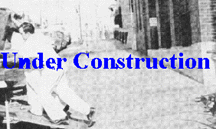
Part Five: How Well?

Part Six: Suppressing Rejection In The Switched Hearts

Part Seven: Real Patients

 Stanford University had decided to move its medical school, Stanford-Lane, San Francisco
to the site of its main campus in Palo Alto, California. Stanford - Lane had been a respected,
clinically oriented medical school. The move signaled primarily closer ties to the growing research
faculty in the other disciplines. By 1959, few established surgeons had transferred to the suburban
site. The dean of the new Stanford school, Robert Alway, M.D., had told Dong and other
inductees at the 1959 Alpha Omega Alpha honor medical society induction dinner to consider
Stanford's new direction in medical research at a new facility in Palo Alto.
Stanford University had decided to move its medical school, Stanford-Lane, San Francisco
to the site of its main campus in Palo Alto, California. Stanford - Lane had been a respected,
clinically oriented medical school. The move signaled primarily closer ties to the growing research
faculty in the other disciplines. By 1959, few established surgeons had transferred to the suburban
site. The dean of the new Stanford school, Robert Alway, M.D., had told Dong and other
inductees at the 1959 Alpha Omega Alpha honor medical society induction dinner to consider
Stanford's new direction in medical research at a new facility in Palo Alto.
 On a bright winter day in 1959, Eugene Dong, M.D. traveled to Stanford University at Palo
Alto, looking for a training position in surgery. He was in the midst of a medical internship in the
Columbia University division at Bellevue Hospital in New York City. The chairman of the
Columbia Medical Division was Dickinson W. Richards, MD, who with Andre Cournand, had
been awarded the 1958 Nobel Prize in Medicine and Physiology for their work leading to an fuller
understanding the physiology of the human heart using cardiac catheterization techniques. Since
Dong was interested in the newly developing area of heart surgery, he did not want to pass up a
chance to learn from Dr. Richards, figuring that there was plenty of time later to pick up his
surgical experience. Upon application to both his alma mater, the University of California at San
Francisco, and the Columbia University surgical service at Bellevue, he received the news that
they wanted him to take an additional year of training at the intern level in surgery before
considering him for a surgical residency. So Dong was trying his luck at a new school and
hospital.
On a bright winter day in 1959, Eugene Dong, M.D. traveled to Stanford University at Palo
Alto, looking for a training position in surgery. He was in the midst of a medical internship in the
Columbia University division at Bellevue Hospital in New York City. The chairman of the
Columbia Medical Division was Dickinson W. Richards, MD, who with Andre Cournand, had
been awarded the 1958 Nobel Prize in Medicine and Physiology for their work leading to an fuller
understanding the physiology of the human heart using cardiac catheterization techniques. Since
Dong was interested in the newly developing area of heart surgery, he did not want to pass up a
chance to learn from Dr. Richards, figuring that there was plenty of time later to pick up his
surgical experience. Upon application to both his alma mater, the University of California at San
Francisco, and the Columbia University surgical service at Bellevue, he received the news that
they wanted him to take an additional year of training at the intern level in surgery before
considering him for a surgical residency. So Dong was trying his luck at a new school and
hospital.  On the particular day of Dong's visit,
On the particular day of Dong's visit, 

 At that time, Stanford required their surgical residents to spend some time in research.
The physical facilities of the
At that time, Stanford required their surgical residents to spend some time in research.
The physical facilities of the 
 The opportunity for Shumway arose from an unlikely source - Dr. Ann Purdy.
Purdy was one of Stanford's pediatric cardiologists and the wife of Dr. Emile Holman,
the long-time chief of surgery at Stanford. Purdy was not satisfied in her professional
relationships with Gerbode and Dr. Saul Robinson, another pediatric cardiologist, and
moved her base of operations to the then
The opportunity for Shumway arose from an unlikely source - Dr. Ann Purdy.
Purdy was one of Stanford's pediatric cardiologists and the wife of Dr. Emile Holman,
the long-time chief of surgery at Stanford. Purdy was not satisfied in her professional
relationships with Gerbode and Dr. Saul Robinson, another pediatric cardiologist, and
moved her base of operations to the then  Shumway teamed with Raymond Stofer, D.V.M. to work out the heart-lung machine and
perfusion issues. Stofer, a master sergeant type in personality and appearance, was a veterinarian
recruited by Stanford to oversee the operations of the surgical laboratory. Under his bluff
exterior, Stofer was a master metal worker and in his private time a fine photographer. Although
he had his own research projects, they were set aside when called upon to develop and operate
the perfusion system. Under Shumway's direction, Stofer worked out an extraordinarily
unadorned and spartan system with a minimum of gauges and monitors to watch, clean, or repair.
The perfusion system was in marked contrast to the complex oxygenating system Gerbode's
perfusionists and anesthesiologists had constructed and had become use to. This simplicity was to
be a trademark of Shumway's conceptual approach to surgical advances.
Shumway teamed with Raymond Stofer, D.V.M. to work out the heart-lung machine and
perfusion issues. Stofer, a master sergeant type in personality and appearance, was a veterinarian
recruited by Stanford to oversee the operations of the surgical laboratory. Under his bluff
exterior, Stofer was a master metal worker and in his private time a fine photographer. Although
he had his own research projects, they were set aside when called upon to develop and operate
the perfusion system. Under Shumway's direction, Stofer worked out an extraordinarily
unadorned and spartan system with a minimum of gauges and monitors to watch, clean, or repair.
The perfusion system was in marked contrast to the complex oxygenating system Gerbode's
perfusionists and anesthesiologists had constructed and had become use to. This simplicity was to
be a trademark of Shumway's conceptual approach to surgical advances. Lower was by then collaborating with Shumway, and when the time came for the first
clinical cases, the group packed the equipment in a moving van and moved lock, stock, and barrel
from the Stanford-Lane laboratories to the Children's Hospital operating room. Shumway's and
Cohn's first case was an atrial septal defect in a young woman which was corrected under
total-body hypothermia. After the surgery, the operating equipment was all packed up and moved
back to Stanford-Lane. There were fourteen more cases done at Children's Hospital before the
school and Shumway moved to Palo Alto.
Lower was by then collaborating with Shumway, and when the time came for the first
clinical cases, the group packed the equipment in a moving van and moved lock, stock, and barrel
from the Stanford-Lane laboratories to the Children's Hospital operating room. Shumway's and
Cohn's first case was an atrial septal defect in a young woman which was corrected under
total-body hypothermia. After the surgery, the operating equipment was all packed up and moved
back to Stanford-Lane. There were fourteen more cases done at Children's Hospital before the
school and Shumway moved to Palo Alto.
